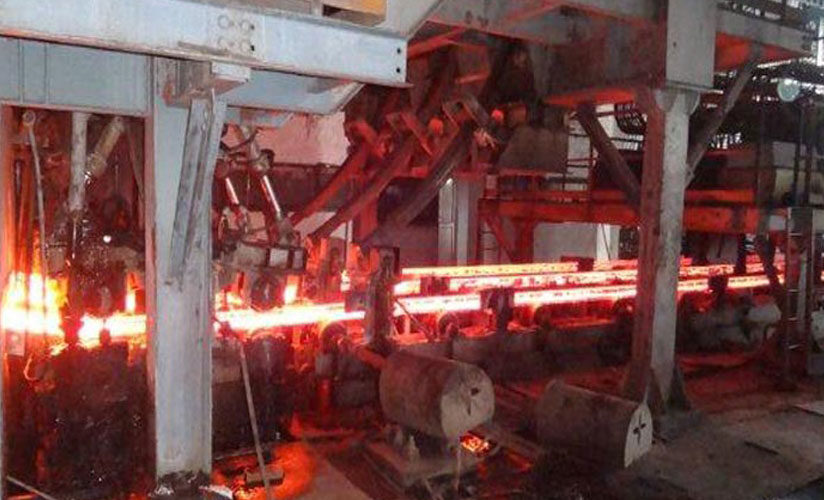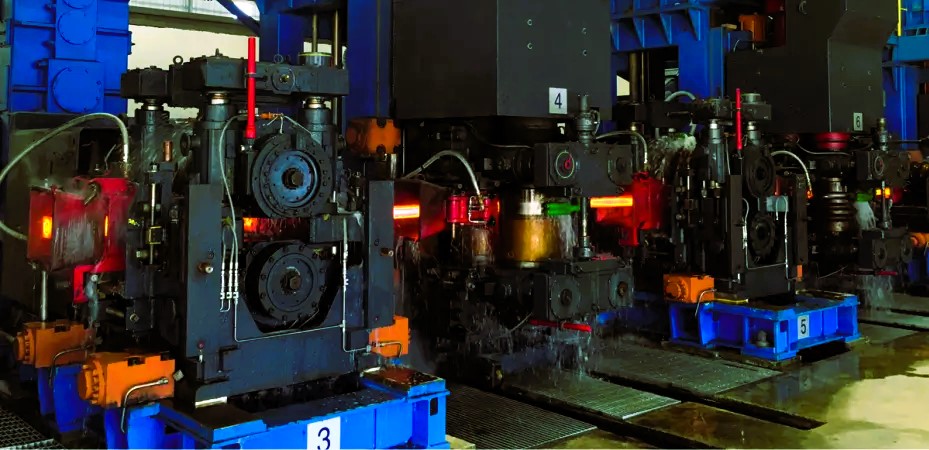Preparing a continuous casting machine before starting the process is crucial to ensure the production of high-quality castings. Here is a step-by-step guide on how to prepare a continuous casting machine: Join Us For Updates
Step 1: Inspection and Maintenance
– Thoroughly inspect the continuous casting machine and its components for any signs of damage, wear and tear, or potential issues.
– Check and repair any malfunctioning or damaged parts, such as the mold, water cooling system, withdrawal system, and cutting mechanisms.
– Clean all elements, removing any dirt, residuals, or previous casting residues.
Step 2: Applying Lubricants
– Apply suitable lubricants to the moving parts of the machine to reduce friction and facilitate the smooth operation of the equipment.
– Lubricate the mold, withdrawal and oscillation mechanisms, rollers, and all other relevant areas as specified by the manufacturer’s guidelines.
Step 3: Setting the Casting Parameters
– Consult the casting recipe or process plan to determine the appropriate casting parameters, such as casting speed, steel temperature, and alloy composition.
– Adjust the machine’s settings accordingly, taking into account the desired casting size and shape.
Step 4: Preheating and Aligning the Mold
– Preheat the mold to the recommended temperature to minimize thermal shocks during casting.
– Ensure the mold is properly aligned in relation to the casting path to facilitate the continuous flow of molten metal.
Step 5: Preparing the Tundish
– Install a new or cleaned refractory lining inside the tundish, which is the holding vessel for the molten metal.
– Ensure that the tundish is securely fastened and in proper alignment with the mold.
Step 6: Connecting the Cooling System
– Connect the water cooling system, including the cooling pipes and spray nozzles, to the mold.
– Test the cooling system for leaks and proper water flow before starting the casting process.
Step 7: Preparing the Withdrawal System
– Set the withdrawal speed and oscillation frequency according to the casting requirements.
– Ensure the withdrawal system is properly aligned and in good working condition.
Step 8: Final Checks and Safety Precautions
– Perform a final inspection of all components and connections to ensure everything is in order.
– Ensure all safety measures are in place, including emergency stops, warning signs, and proper personal protective equipment for the operators.
Once you have completed these steps, the continuous casting machine should be ready for operation. Regular maintenance and monitoring throughout the casting process are essential to maintain the machine’s performance and produce high-quality castings. Read Our Blog…
How to Prepare Tundish before Start continuous Casting Process?
Before starting the continuous casting process, it is important to prepare the tundish properly to ensure smooth and efficient casting. Here are the steps to prepare the tundish:
1. Clean the Tundish: Start by removing any residual slag or dross from the previous casting process. Use scrapers, brushes, or high-pressure water jets to clean the tundish thoroughly. Ensure that the entire surface is free from any contaminants.
2. Inspect the Nozzles and Stopper Rod: Examine the nozzle and stopper rod for any signs of wear, damage, or blockages. Clean or replace them if necessary. Make sure that the nozzle is properly positioned and centered in the tundish.
3. Preheat the Tundish: Heat the tundish to the desired casting temperature. This is usually done by using burners or electric heaters to maintain the required temperature. The preheating process helps in preventing the rapid cooling of molten metal during casting.
4. Install Refractory Components: Check the refractory lining of the tundish and replace any damaged or worn-out parts. Ensure that the refractory components, such as dams, weirs, and metering nozzles, are properly positioned and securely fixed.
5. Apply Protective Coating: To prevent the molten metal from reacting with the tundish lining or causing premature wear, apply a protective coating on the refractory surfaces. This coating acts as a barrier between the molten metal and the refractory, reducing erosion and extending the tundish’s lifespan.
6. Apply Secondary Coating (if required): Depending on the casting process and requirements, a secondary coating may be applied to the tundish lining. This coating further enhances the lining’s protection and minimizes the risk of heat loss and metal contamination during casting.
7. Fill the Tundish with Molten Metal: Once the tundish is properly prepared, it is ready to be filled with molten metal. Ensure that the metal is at the correct temperature and free from impurities or excess slag.
when Molten metal is poured into tundish and after tundish it moves to mould. A mostly rectangular or Square strand profile (Billet) is formed out of liquid steel with a mould. Afterwards, the strand profile has to be cooled down in several levels. Depending on the size of the CCM there can be several strands too. After the steel strand has left the cooling zone, it is completely set. Afterwards it gets usually cut with the help of blowpipes into the desired lengths. The typical temperatures of these billets are in the range between 800 °C and 1000 °C.
By following these steps, the tundish will be properly prepared for the continuous casting process, ensuring optimal casting conditions and high-quality end products.




